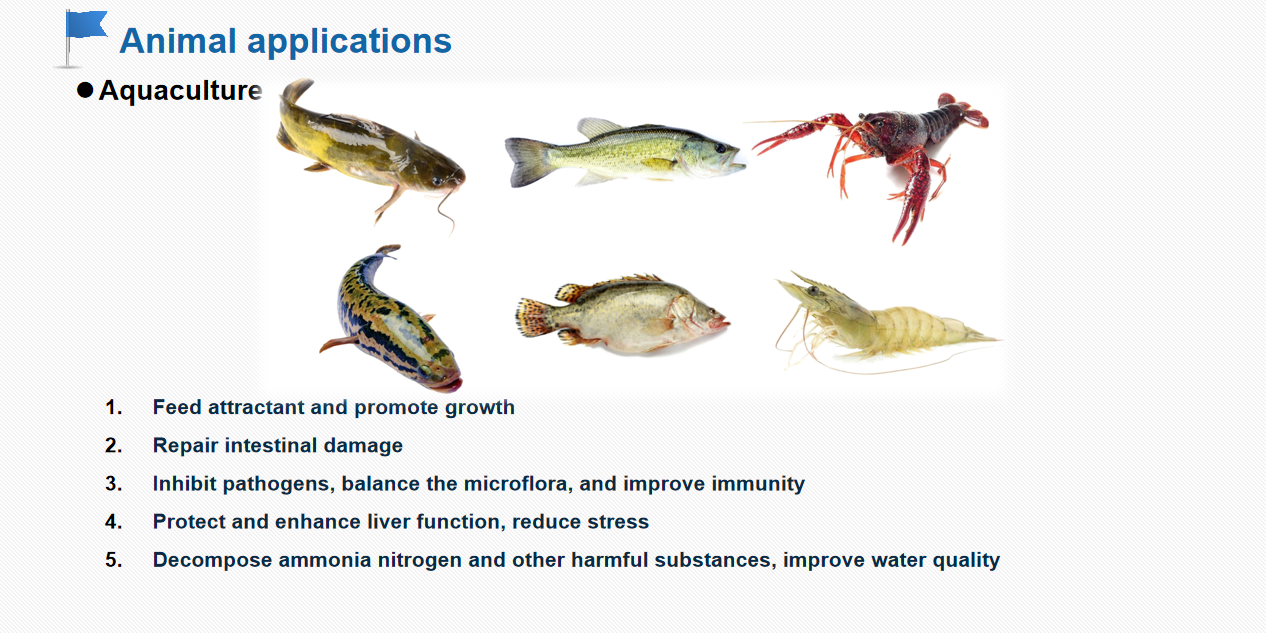Relationship between heat stress and intestinal flora during high temperature in aquaculture
- Categories:Technical article
- Author:JBH BIO
- Origin:Henan Jinbaihe Biotechnology Co.,LTD
- Time of issue:2022-07-21 17:43
- Views:
Relationship between heat stress and intestinal flora during high temperature in aquaculture
- Categories:Technical article
- Author:JBH BIO
- Origin:Henan Jinbaihe Biotechnology Co.,LTD
- Time of issue:2022-07-21 17:43
- Views:
 Most aquaculture animal growth rate reaches its peak when high temperature period , but because of this phase is the highest temperature in one year, farmed animals easily arise as well as the slow feed intake and growth the increased disease. One reason is that the high temperature led to dramatic change of water environment, on the one hand is the water temperature stratification, surface water can reach more than 30℃, formation water less than 20 ℃.
Most aquaculture animal growth rate reaches its peak when high temperature period , but because of this phase is the highest temperature in one year, farmed animals easily arise as well as the slow feed intake and growth the increased disease. One reason is that the high temperature led to dramatic change of water environment, on the one hand is the water temperature stratification, surface water can reach more than 30℃, formation water less than 20 ℃.
On the other hand, intense light and high temperature promote the vigorous growth of algae and bacteria in water. These drastic fluctuations will make the farmed animals in a state of heat stress. Heat stress can be understood as environmental stress in high temperature period, farmed animals often change their physiological reaction to cope with it.
Research shows that temperature change can affect the animals' breathing active, number of white blood cells, cytotoxic activity of macrophages, etc., it will also affect the liver tissue activity of hydrogen oxidation enzymes and related immune activity of protein in the blood after heat stress reaction, aquatic animals' ability to metabolize decline commonly, osmotic pressure change
As one of the important immune systems of aquatic animals, heat stress can cause intestinal epithelial cell damage and apoptosis, destroy intestinal mucosal structure, disrupt intestinal flora, weaken intestinal barrier function, and increase the susceptibility of pathogenic bacteria
Heat stress will activate the endogenous apoptosis pathway of intestinal epithelial cells, namely the apoptosis pathway with mitochondria as the core. Meanwhile, heat stress will also produce a large number of reactive oxygen species in cells.
ROS production in large quantities will destroy the antioxidant system in organisms, leading to lipid peroxidation of cell membranes, tissue damage, and ultimately the destruction of physiological processes.
The results showed that heat stress decreased the relative abundance of Bacteroidetes and increased the relative abundance of Proteobacteria
The relative abundance of Planctomycetes and Actinomyces in the intestinal flora of tadpoles increases with the increase of temperature, and the intestinal microbes can produce a variety of metabolites. The change of water temperature will change the concentration of intestinal microbial metabolites, which plays an important role in maintaining and regulating host activities
Microbial metabolites can be roughly divided into two categories:
1) Metabolites produced by digestion or fermentation of feed components directly by intestinal microorganisms;
2) Biochemical modification of host metabolites by intestinal microbiota. The first type of marker metabolites, such as SCFAs, are generated by anaerobic microorganisms such as Clostridium butyricum through fermentation of structural carbohydrates, which can promote intestinal mucus secretion and provide energy for intestinal epithelial cells. SCFAs play an important role in the host body,SCFAs can be diffused into the cytoplasm as A substrate of fatty acid oxidation (FAO) to produce acetyl-CoA and promote tricarboxylic acid cycle,TCA, and oxidative phosphorylation,(OXPHOS) .
In terms of the improvement effect of OXPHOS on intestinal tract, the effect of butyric acid is more significant in SCFAs. After transformation of butyric acid into butanoyl-CoA, butyric acid passively diffuses into mitochondria. After β oxidation, butyric acid participates in TCA and OXPHOS to produce metabolites of the second type of energy marker, such as secondary bile acid which is produced by Bacteroides, Lactobacillus and Bifidobacterium.
Secondary bile acids of Fusobacterium and Eubacterium play an important role in host as G protein conjugated bile acid receptor 1(GPBAR1) and 1H group member 4 of nuclear receptor subfamily (NR1H4); agonists, also known as FXR, regulate dendritic cell (DC) function and influence host immune regulation.
In summary, Clostridium butyricum can not only repair the damaged intestinal epithelial cells, but also improve the immune capacity of the body in regulating the heat stress of aquatic animals, which has a good prospect.
Service Hotline:
Tel:+86-371-61779068
Phone:+86-18602468822
WhatsApp:+86-15717345927
Skype: +86-18639087551
Email:melody@jbh2013.com
Add: Fudao Town, tangyin county, Anyang City, Henan Province
Copyright © 2020 Henan JBH Bio-Tech Co., Ltd 豫ICP备15035929号 Business License Powered by : www.300.cn SupportedIPV6

